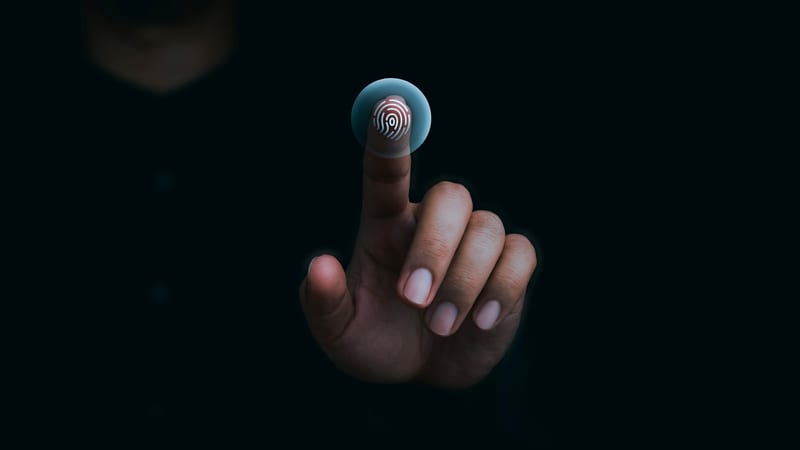AI, intellectual property & game development — key insights from Games Tech Connect

We outline the key takeaways from our Games Tech Connect session on how generative AI is being used in video game development.
Read more
We make the difference. Talk to us: 0333 004 4488 | hello@brabners.com
AuthorsEleanore Beard
7 min read
Technology, Media & Telecoms, Regulatory & Professional Conduct, Retail, Employment, Data Protection

The ICO’s reprimand to Serco Leisure for its use of biometric data highlights the importance of compliance with data protection regulations and the need for transparency in handling sensitive information. This decision serves as a reminder to companies and organisations that they must adhere to strict guidelines and regulations when implementing biometric technology.
Here, data protection specialist Eleanore Beard outlines the ten key steps that any organisation should follow when using biometrics.
From security and law enforcement to healthcare and finance, biometrics — the measurement and statistical analysis of people's unique physical and behavioural characteristics — have become increasingly prevalent. However, the use of biometric data raises concerns about privacy and data protection — especially when it comes to sensitive information such as fingerprints, facial scans and iris patterns.
Due to the sensitivity of biometric data, it’s considered to be special category data. This means that extra protections are needed to use and process it.
Following the publication of the ICO (Information Commissioner's Office) investigation and decision regarding the use of biometric data by Serco Leisure, there have been many concerns from businesses that currently use biometrics — sparking discussions around privacy, data protection and ethics.
As a result of the ICO’s findings, Serco Leisure was required to cease its use of facial recognition technology and implement measures to ensure compliance with data protection legislation.
A large public service provider, Serco is involved in sectors such as healthcare, immigration and leisure services. It operates leisure facilities under the name Serco Leisure on behalf of community leisure trusts, local authorities and Sport England.
Serco Leisure used facial recognition and fingerprint biometric data for the purposes of monitoring employee attendance, including to clock in and out of work.
However, the ICO found that in monitoring its employees in this way, Serco Leisure had been a breach of:
In light of its findings, the ICO issued an enforcement notice to order Serco Leisure and the community leisure trust to stop using facial recognition technology and fingerprint scanning to monitor workers’ attendance.
The ICO had concerns that employees were given no alternative to the use of biometrics. As the relationship between employer and employee is unbalanced, employees could feel like there’s no choice but to consent — and therefore the consent couldn’t be considered ‘freely given’. When collecting employee’s biometric data, it’s important that an alternative mechanism is provided.
Although Serco Leisure stated to the ICO that alternative mechanisms for employees to log their attendance would be available, this information wasn’t clearly brought to employees’ attention — even when an employee had complained. Further, the ICO found that Serco Leisure’s ‘Standard Operating Procedure’ indicated that employees were “expected” to use biometric technology, its use was a requirement and employees could be subject to disciplinary action if they refused.
The ICO also provided a reminder that the ‘legitimate interest’ legal basis won’t apply if the controller can reasonably achieve the same result in another less intrusive manner — especially when implementing biometric solutions. Serco Leisure had failed to give enough weight to the intrusive nature of biometric processing or risks to the individual. It was also found to have failed to process the biometric data in a fair manner and couldn’t produce an appropriate policy document as required.
While biometric tools offer convenience and enhanced security in many applications, they also pose risks — both to businesses using the tools and individual data subjects — if those tools aren’t correctly implemented.
If you’re looking to implement a biometric solution in your business, follow these ten key steps to stay on the right side of data protection legislation.
Before implementing the collection of biometric data, always carry out a DPIA (Data Processing Impact Assessment) to assess your processing. You can use the DPIA to justify your use of personal data and ensure that the collection and processing is “fair and proportionate”, as well as in-line with all the principles set out in the data protection legislation. The DPIA will also ensure that you’ve undertaken the purpose, necessity and balancing tests and could even be used to seek the views of employees.
Conducting a DPIA alongside relevant stakeholders like your data protection officers and legal advisers will enable you to identify measures to mitigate any risks.
Identify a lawful basis for processing biometric data under both Article 6 and Article 9. This could include obtaining consent from individuals, fulfilling a legal obligation or necessity for the performance of a contract. If using consent, you must ensure that it’s freely given, with people having the ability to opt out. You should also be able to offer an alternative (less intrusive) mechanism.
Inform individuals about the purpose of collecting biometric data, how it will be used and their rights regarding its processing. Provide clear and easily understandable explanations in privacy notices or consent forms. Where you’re collecting special category data, ensure that an appropriate policy statement is in place.
Collect only the biometric data necessary for the intended purpose. Avoid collecting excessive or irrelevant biometric information.
Implement robust security measures to protect biometric data from unauthorised access, disclosure or alteration. This may include encryption, access controls and regular security assessments to identify and address vulnerabilities.
Ensure the accuracy of biometric data and establish procedures for updating or rectifying inaccuracies. Implement measures to verify the quality of biometric data at the point of collection and periodically throughout its lifecycle.
Define retention periods for biometric data based on the purposes for which it was collected. Regularly review and securely delete or anonymise biometric data once it’s no longer necessary or if individuals withdraw their consent.
Respect individuals' rights regarding their biometric data. Allow individuals to access their data, request corrections or erasure and object to its processing in certain circumstances. Establish processes for handling such requests promptly and transparently.
If engaging third-party processors to handle biometric data, ensure that they adhere to data protection legislation and provide adequate safeguards. Implement contractual agreements and due diligence processes to monitor compliance.
Continuously monitor and review compliance with data protection legislation related to biometric data processing. Conduct regular audits to assess the effectiveness of security measures, data handling practices and adherence to individuals' rights.
If you or your organisation have any queries on how to establish a compliant process for collecting and processing biometrics, our data protection lawyers can help.
We’re experienced in helping clients to manage the risks of collecting and using biometric data, including helping you to complete a Data Protection Impact Assessment and comply with transparency requirements (including the appropriate policy document).
To discuss this or your current compliance with the data protection legislation, talk to us by completing our contact form below.
Eleanore Beard
Eleanore is a Legal Director and Data Protection Practitioner in our commercial team.
Read more
Loading form...

We outline the key takeaways from our Games Tech Connect session on how generative AI is being used in video game development.
Read more

We outline what you need to know about the UKIPO's proposed fee increases across patents, trade marks and designs.
Read more

We explain the impact of the cyber-attack on JLR's workforce and outline what to do to protect your business and minimise the impact if an incident occurs.
Read more